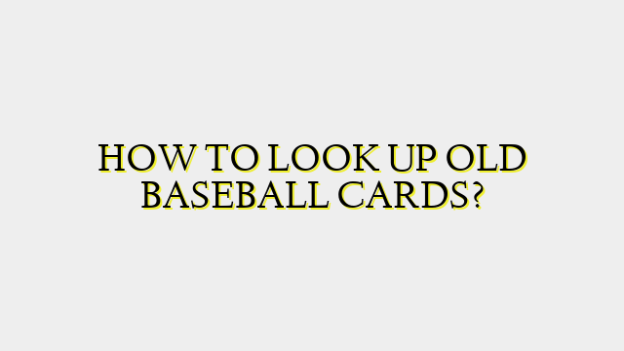The first step in looking up old baseball cards is to identify key details about the card such as the player name, team, year, manufacturer and any other distinctive markings. Having as much information as possible will help greatly in identifying the exact card. Carefully examine the front and back of the card for any clues.
Once you’ve gathered the important card details, you’ll want to use online resources to research card values and find comparable sales. Some of the top sites for researching baseball cards include eBay, BaseballCardPedia.com, BaseballCardGallery.com and PriceCharting.com. eBay allows you to search for recently sold listings of the same card to see what they actually sold for. This can give you a good idea of approximate market value.
BaseballCardPedia has a vast online database with details on hundreds of thousands of baseball cards produced over the decades. You can search by player, year, team, manufacturer and more to hopefully find an exact match of your card. The site will provide information like the printed runs, variations, estimated population and guidelines on grade and condition. This additional context is helpful for evaluation.
BaseballCardGallery is another deep card database that allows searching and provides photos, specs and estimated prices. What’s useful about this site compared to others is that prices tend to be on the conservative side since they want to provide guidance below likely market value to account for condition differences.
PriceCharting has a large database of sold eBay prices that can be charted overtime to see value trends. You enter your card details and it displays sales histories. This is useful for identifying potential outliers as well as understanding if values have been appreciating, stable or declining for that particular card over recent years and months.
While online resources provide guidance, condition is truly the most important factor when determining an accurate value for any older baseball card. Even minor variations in centering, edges or corner/surface issues can significantly impact what a card is realistically worth on today’s market. The card grader Beckett produces an industry-standard 1-10 condition grading scale as a guideline.
Once you feel comfortable with the details and estimated market value range for your card based on comparable sales, you have a few selling options. Peer-to-peer selling sites like eBay are very popular for moving individual rare cards. You can also consider consignment through an established collectible auction house like Heritage Auctions or Memory Lane if your card has particularly high value. Local hobby shops may purchase cards outright as well for a discounted rate versus market value.
Proper storage and handling is important once your research is complete. It’s best to topload the card in a fitted plastic sleeve for protection and then store in a cardboard box, album or binder kept in a cool, dry place away from direct sunlight which can damage the surfaces over time. By taking the right steps to accurately identify and evaluate your old baseball cards, you’ll have the knowledge needed to determine potential worth whether keeping as a long term investment or looking to sell.




